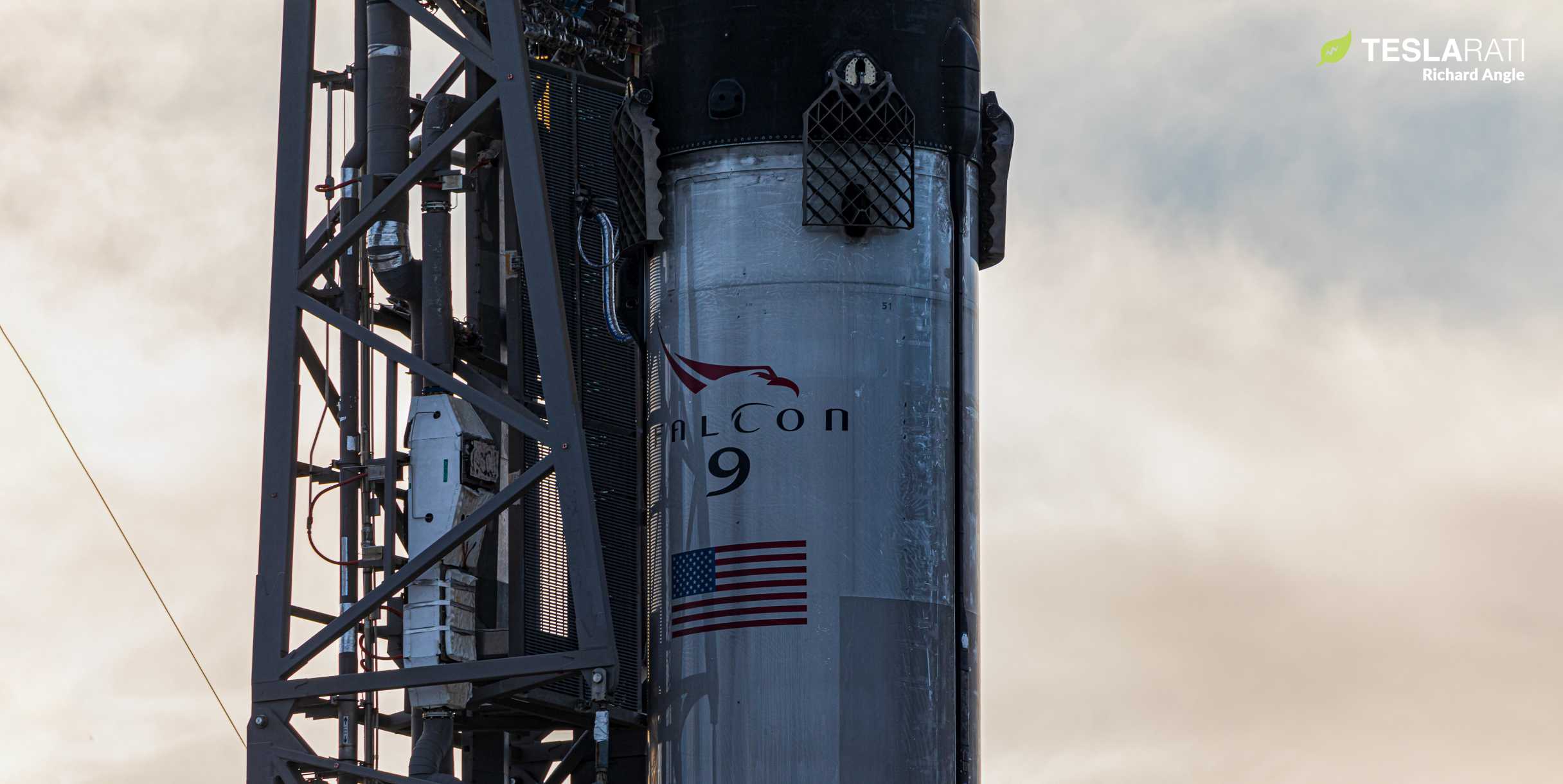
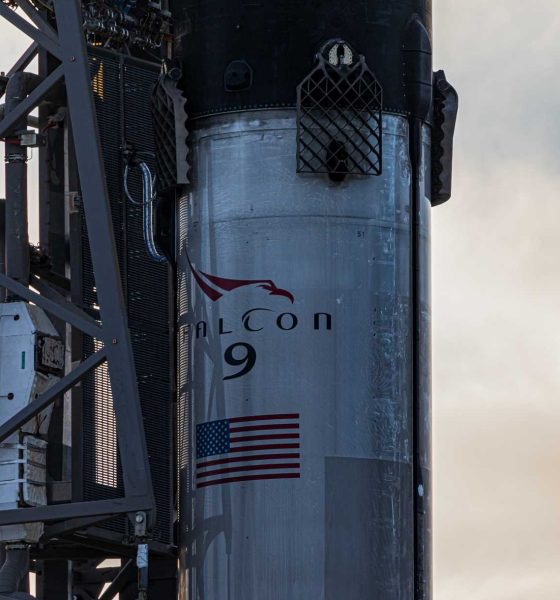
News
SpaceX gets first taste of coronavirus epidemic's consequences
SpaceX’s next scheduled rocket launch has been indefinitely delayed after Argentina – responsible for the SAOCOM 1B satellite payload – put strict travel restrictions in place, the first sign of the coronavirus epidemic’s consequences for the company.
Previously expected to launch as early as March 30th, the ~3000-kg (6600 lb) SAOCOM 1B radar satellite departed its Bariloche production facilities and arrived at Cape Canaveral around February 23rd, around the same time pandemic impacts began to be felt outside of China. Now likely sitting in a SpaceX payload processing facility at Cape Canaveral Air Force Station (CCAFS), it appears that SAOCOM 1B will have to wait for the foreseeable future before teams from Argentina and other countries are able to access the spacecraft and prepare it for launch.
While the delay is unfortunate, it hardly comes as a surprise at the same time dozens of countries around the world are considering – or already enacting – extreme countermeasures to mitigate the damage that will be caused by the COVID-19 pandemic. Thankfully, once Argentinian space agency (CONAE) employees are able to prepare SAOCOM 1B for flight, the mission is still set to make history, marking the first time a rocket launches on a polar trajectory from the United States’ East Coast in more than a half-century. In the meantime, SpaceX – while not deriving any income – also has ways of potentially taking advantage of a bad situation and exploiting unexpected downtime as a result of customer delays.
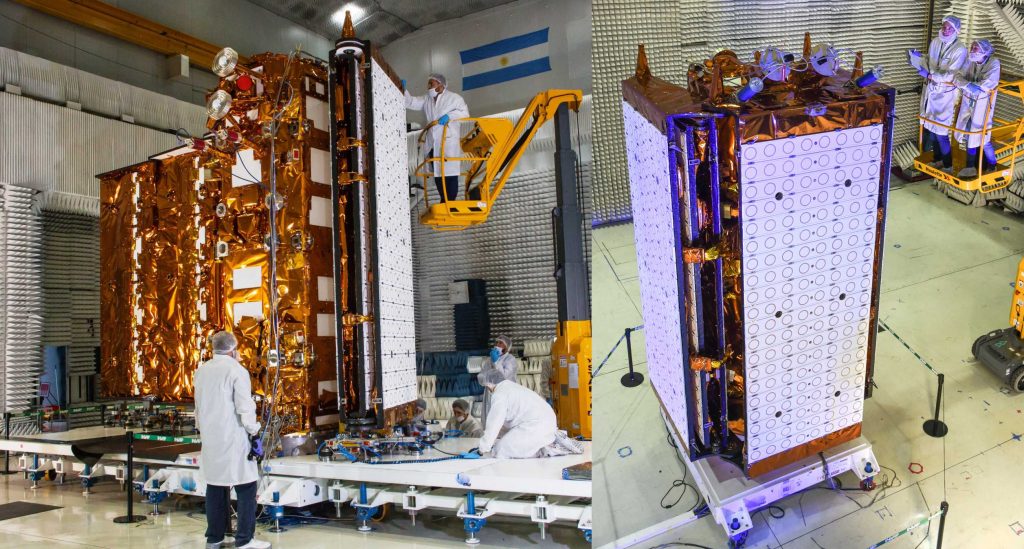
In October 2018, SpaceX successfully launched SAOCOM 1B’s predecessor – SAOCOM 1A – from its Vandenberg Air Force Base (VAFB) facilities, using a West Coast landing pad (LZ-4) for the first time ever. The spacecraft has successfully operated in space ever since, serving scientists, farmers, and more with high-quality satellite radar and Earth observation data.
Planned as a two-satellite constellation, CONAE spent another 15 or so months manufacturing and assembling the sister spacecraft, reaching the integration completion milestone in December 2019. After completing a few additional mechanical and electrical tests to verify the satellite’s health in January and February 2020, SAOCOM 1B was loaded aboard a Russian Antonov cargo plane and flown directly to Florida’s Kennedy Space Center (KSC), landing at the same runway NASA’s Space Shuttle once used.
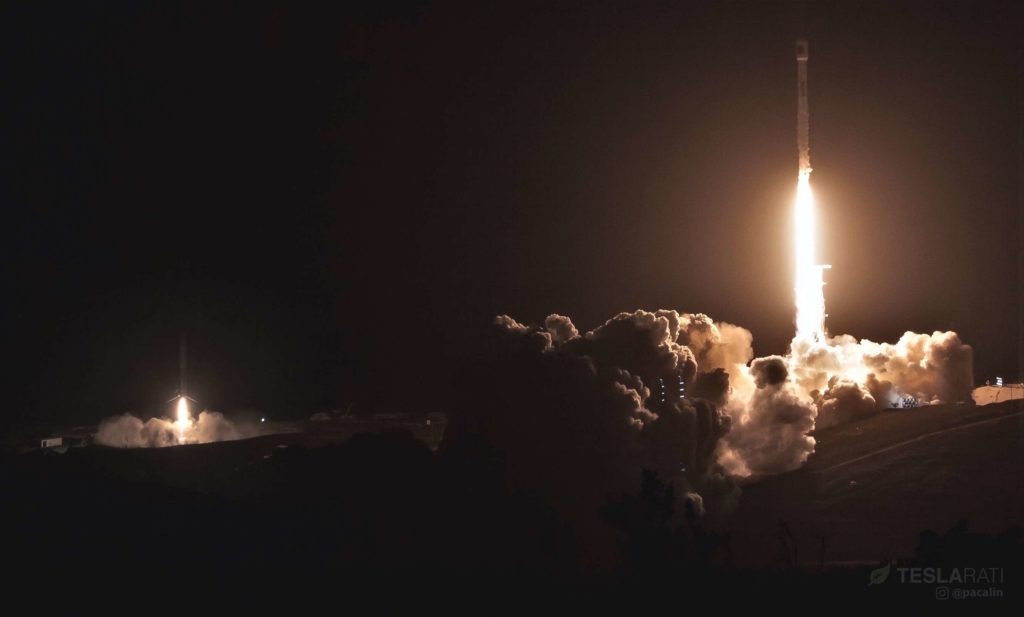
Shortly after the growing global pandemic began to bare its teeth, the Argentinian government made the decision to almost completely ban international travel for the time being, while citizens now face heightened restrictions in a bid to legally enforce social distancing precautions. A scientific satellite launch has unsurprisingly not won exemption rights, meaning that it’s now all but impossible for the Argentinian space agency to send people and supplies back and forth from Florida – a necessity for something as complex as a satellite launch campaign.
As such, SpaceX’s SAOCOM 1B launch will be delayed until Argentina is able to loosen domestic and international travel restrictions – the timeline for which is anyone’s guess.
Bittersweet lemonade
Prior to the commercial mission’s indefinite delay, SpaceX’s seventh dedicated Starlink and sixth v1.0 satellite launch – Starlink L7 or Starlink V1 L6 – was expected no earlier than (NET) April 2020, sometime shortly after SAOCOM 1B’s NET March 30th launch. However, CEO Elon Musk and a second executive recently revealed that SpaceX is building Starlink satellites faster than it can launch them – churning out as many as six spacecraft in a single day.
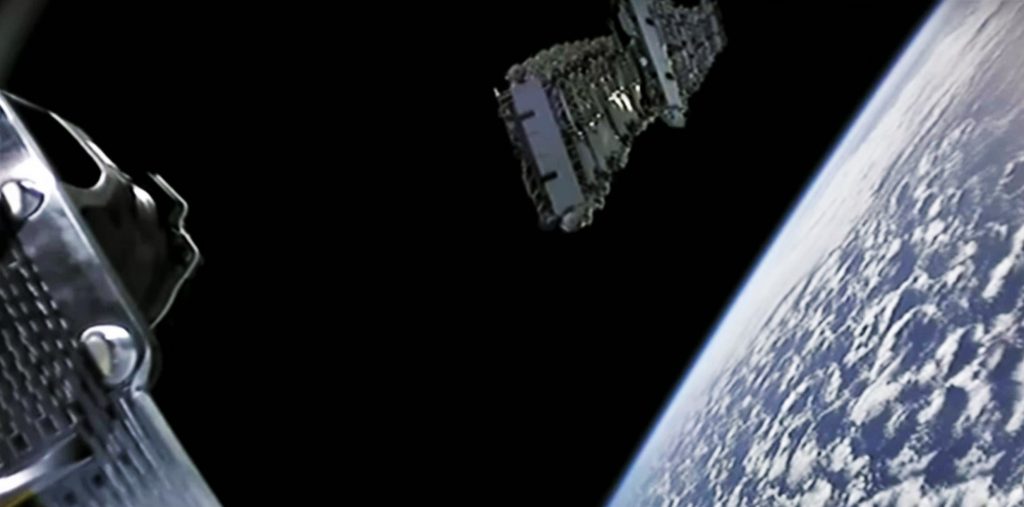
Previously proposed on Teslarati, SpaceX may thus have a substantial backlog – ranging from one to several launches worth – of satellites that are ready for flight and either waiting for transport or already in Florida. In 2020, SpaceX has completed four 60-satellite Starlink launches in ~11 weeks, averaging a bit less than three weeks per mission. Even if SpaceX’s Starlink factory only averages 4-5 satellites per day each month, that would mean that the company is still building at least 20-40 extra satellites for each batch of 60 it launches.
In other words, if a separate Falcon 9 booster, upper stage, and payload fairing are already prepared for launch or SAOCOM 1B customer CONAE is willing to let SpaceX use its rocket (much less likely), the company could feasibly replace the mission on its manifest with an internal Starlink launch. This would reduce the amount of time the company’s workforce is listless as a result of the pandemic – a move that wouldn’t save money, per se, but would more efficiently distribute resources that will otherwise be wasted. For now, though, we – and the rest of the world – will have to wait and see.

News
Elon Musk’s Grokipedia surges to 5.6M articles, almost 79% of English Wikipedia
The explosive growth marks a major milestone for the AI-powered online encyclopedia, which was launched by Elon Musk’s xAI just months ago.

Elon Musk’s Grokipedia has grown to an impressive 5,615,201 articles as of today, closing in on 79% of the English Wikipedia’s current total of 7,119,376 articles.
The explosive growth marks a major milestone for the AI-powered online encyclopedia, which was launched by Elon Musk’s xAI just months ago. Needless to say, it would only be a matter of time before Grokipedia exceeds English Wikipedia in sheer volume.
Grokipedia’s rapid growth
xAI’s vision for Grokipedia emphasizes neutrality, while Grok’s reasoning capabilities allow for fast drafting and fact-checking. When Elon Musk announced the initiative in late September 2025, he noted that Grokipedia would be an improvement to Wikipedia because it would be designed to avoid bias.
At the time, Musk noted that Grokipedia “is a necessary step towards the xAI goal of understanding the Universe.”
Grokipedia was launched in late October, and while xAI was careful to list it only as Version 0.1 at the time, the online encyclopedia immediately earned praise. Wikipedia co-founder Larry Sanger highlighted the project’s innovative approach, noting how it leverages AI to fill knowledge gaps and enable rapid updates. Netizens also observed how Grokipedia tends to present articles in a more objective manner compared to Wikipedia, which is edited by humans.
Elon Musk’s ambitious plans
With 5,615,201 total articles, Grokipedia has now grown to almost 79% of English Wikipedia’s article base. This is incredibly quick, though Grokipedia remains text-only for now. xAI, for its part, has now updated the online encyclopedia’s iteration to v0.2.
Elon Musk has shared bold ideas for Grokipedia, including sending a record of the entire knowledge base to space as part of xAI’s mission to preserve and expand human understanding. At some point, Musk stated that Grokipedia will be renamed to Encyclopedia Galactica, and it will be sent to the cosmos.
“When Grokipedia is good enough (long way to go), we will change the name to Encyclopedia Galactica. It will be an open source distillation of all knowledge, including audio, images and video. Join xAI to help build the sci-fi version of the Library of Alexandria!” Musk wrote, adding in a later post that “Copies will be etched in stone and sent to the Moon, Mars and beyond. This time, it will not be lost.”
News
Tesla Model 3 becomes Netherlands’ best-selling used EV in 2025
More than one in ten second-hand electric cars sold in the country last year was a Tesla Model 3.

The Tesla Model 3 became the most popular used electric car in the Netherlands in 2025, cementing its dominance well beyond the country’s new-car market.
After years at the top of Dutch EV sales charts, the Model 3 now leads the country’s second-hand EV market by a wide margin, as record used-car purchases pushed electric vehicles further into the mainstream.
Model 3 takes a commanding lead
The Netherlands recorded more than 2.1 million used car sales last year, the highest level on record. Of those, roughly 4.8%, or about 102,000 vehicles, were electric. Within that growing segment, the Tesla Model 3 stood far ahead of its competitors.
In 2025 alone, 11,338 used Model 3s changed hands, giving the car an 11.1% share of the country’s entire used EV market. That means more than one in ten second-hand electric cars sold in the country last year was a Tesla Model 3, Auto Week Netherlands reported. The scale of its lead is striking: the gap between the Model 3 and the second-place finisher, the Volkswagen ID3, is more than 6,700 vehicles.
Rivals trail as residual values shape rankings
The Volkswagen ID.3 ranked a distant second, with 4,595 used units sold and a 4.5% market share. Close behind was the Audi e-tron, which placed third with 4,236 registrations. As noted by Auto Week Netherlands, relatively low residual values likely boosted the e-tron’s appeal in the used market, despite its higher original price.
Other strong performers included the Kia Niro, the Tesla Model Y, and the Hyundai Kona, highlighting continued demand for compact and midsize electric vehicles with proven range and reliability. No other model, however, came close to matching the Model 3’s scale or market presence.
News
Tesla Model Y Standard Long Range RWD launches in Europe
The update was announced by Tesla Europe & Middle East in a post on its official social media account on X.

Tesla has expanded the Model Y lineup in Europe with the introduction of the Standard Long Range RWD variant, which offers an impressive 657 km of WLTP range.
The update was announced by Tesla Europe & Middle East in a post on its official social media account on X.
Model Y Standard Long Range RWD Details
Tesla Europe & Middle East highlighted some of the Model Y Standard Long Range RWD’s most notable specs, from its 657 km of WLTP range to its 2,118 liters of cargo volume. More importantly, Tesla also noted that the newly released variant only consumes 12.7 kWh per 100 km, making it the most efficient Model Y to date.
The Model Y Standard provides a lower entry point for consumers who wish to enter the Tesla ecosystem at the lowest possible price. While the Model 3 Standard is still more affordable, some consumers might prefer the Model Y Standard due to its larger size and crossover form factor. The fact that the Model Y Standard is equipped with Tesla’s AI4 computer also makes it ready for FSD’s eventual rollout to the region.
Top Gear’s Model Y Standard review
Top Gear‘s recent review of the Tesla Model Y Standard highlighted some of the vehicle’s most notable features, such as its impressive real-world range, stellar infotainment system, and spacious interior. As per the publication, the Model Y Standard still retains a lot of what makes Tesla’s vehicles well-rounded, even if it’s been equipped with a simplified interior.
Top Gear compared the Model Y Standard to its rivals in the same segment. “The introduction of the Standard trim brings the Model Y in line with the entry price of most of its closest competition. In fact, it’s actually cheaper than a Peugeot e-3008 and costs £5k less than an entry-level Audi Q4 e-tron. It also makes the Ford Mustang Mach-E look a little short with its higher entry price and worse range,” the publication wrote.








